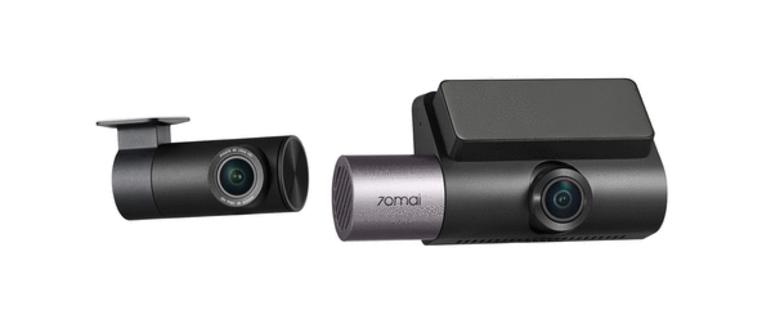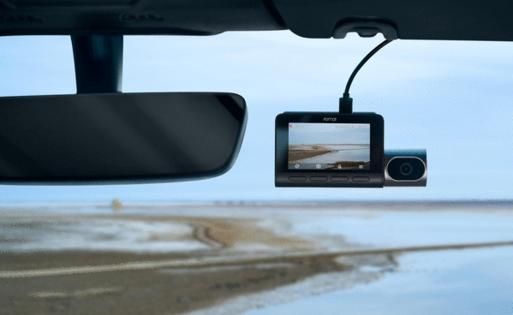Tech review: 70mai dash cam effortlessly captures your drive
Published in Science & Technology News
It is funny to me how accustomed we have become to certain technology.
I rarely leave the house without my iPhone. I also have come to rely on asking Alexa to turn my lights on and off.
I’m also keenly aware that I have come to expect the cars I drive will always have a dash cam.
I’ll admit I didn’t drive with a dash cam for the longest time, but my gig as a gadget reviewer soon enough brought them into my life.
I was one who figured dash cams were really for people who made their living driving, like truckers or rideshare drivers.
My outlook changed, however, when my dash cam captured an accident that happened while my wife was driving my car.
My wife was driving in the left lane of a three-lane road and someone driving in the center lane decided they wanted to turn left. Boom. Crash.
My wife called to tell me about the wreck (no injuries), and when I arrived at the scene, I immediately connected to my dash cam and downloaded the video of the crash to show the police and insurance company.
It is amazing how the questions get easier when you can show the authorities actual footage of the incident.
Now I can’t imagine driving without a dash cam.
For the last few weeks, I’ve been testing out the 70mai Dash Cam 4K T800 ($399.99, Amazon), and it has a ton going for it.
This is a three-channel dash cam, which means it has three cameras — one facing forward, one facing the vehicle’s interior and one affixed to the back window giving a view out the back.
All three camera feeds are recorded at the same time on a microSD card. This is also a good time to mention a 512-gigabyte memory card is included with the T800. Because there are three high-resolution streams being captured, the 512GB card can record 16 hours before it starts overwriting the oldest footage.
The cabin camera can be turned on or off in the settings, and you can choose for yourself whether you want to use the rear-view camera, which connects to the main dash on your windshield via a very long USB-C cable.
The front and rear-view cameras use the latest Sony Starvis 2 camera sensors, which provide for 4K clear video. The cabin camera captures video in 1080p.
Each lens can be adjusted up or down manually to best frame the view out of your windows.
The main dash cam body has a 3-inch screen on the back to show you the view from the cameras. Under the screen are four buttons you use to navigate the dash cam’s settings.
The T800 ships with a USB-C cable and power supply that plugs into your car’s 12v power port. You can purchase an optional hardwire kit to connect to your vehicle’s fuse box. The hardware kit also includes a slot for a SIM card, which means you can add your own cellular SIM to enable some advanced features like remotely connecting and viewing the live video whenever you like, even if your car is across the country.
You can also live stream the video from the T800 and provide live route tracking and instant alerts if the dash cam detects something going on.
The goal of a dash cam is to just work. Ideally you install it, make sure it’s adjusted correctly and then hopefully you can just forget about it until the day comes when you need to retrieve some video footage.
Hopefully you want to download a clip because you saw something funny and not because of an accident, but when it comes time to interact with the dash cam, you’ll need to get out your phone and fire up the 70mai app.
You’ll need to configure the T800’s Wi-Fi 6 to connect directly to your phone. This is a fast way to move video (about 5 seconds to download a one-minute video), but if you’re like me and use Apple CarPlay, you’ll have to turn off CarPlay to free up your iPhone’s Wi-Fi to make the Wi-Fi connection to the dash cam.
The video looks great. The Sony sensors are amazing. It was not hard at all to make out license plate numbers, which is a great test of a dash cam’s quality.
You can choose to have the T800 superimpose the date and time on the bottom of the video as well as your car’s speed and exact location (longitude and latitude) from the T800’s built-in GPS.
There are cheaper dash cams, but in this case, you really do get what you pay for. The T800 is everything I want in a dash cam. Setup isn’t difficult. Running the wire along your headliner to the rear window camera is the hardest part, but once you have things connected, it really does its job perfectly.
©2025 Tribune Content Agency, LLC.










Comments